Qualifying precision
(100% inspection!!) optical filters is tedious and possibly inaccurate.
In addition, you need a way to deliver data and results.
Everyone has Excel! There is no better way.
Download the Excel Workbook (1.1M) shown here.
Extract
All to C:\BandPassCalcDemo
(or modify path in C12 in the Setup sheet).
An
Excel Workbook for edge filters
is also available. These workbooks do not require FilmStar.
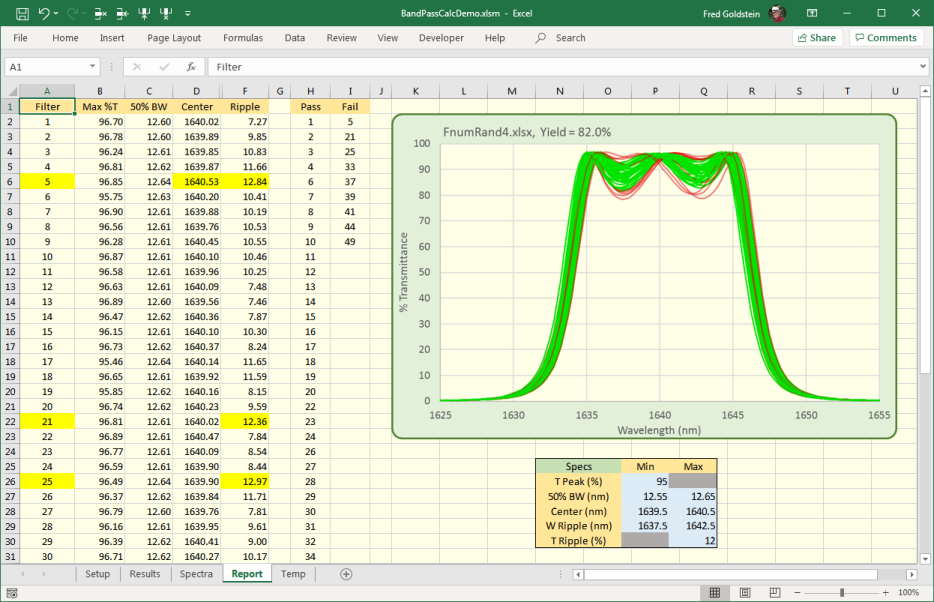
Here we utilize
the FilmStar Collector
for data acquisition. Spectra are acquired manually or
automatically with Scan.. Collect BASIC calls. The Spectra worksheet utilizes
Collector
format (51 Excel columns instead of 50 files!!). Ripple
is defined here as %Tmax-%Tmin over the Ripple
range (1637.5 to 1642.5 nm in the example).
While our example calculates filter
performance in VBA, the same can be accomplished
without VBA
by those willing to dig deep, as in the worksheet
formula below for T Ripple where wMin and
wMax specify wavelength range.
=MAX(INDIRECT("B"&MATCH(wMin,
A:A)):INDIRECT("B"&MATCH(wMax, A:A)))-MIN(INDIRECT("B"&MATCH(wMin,
A:A)):INDIRECT("B"&MATCH(wMax, A:A)))
In our example, FilmStar DESIGN simulates measured
spectra. In practice, pass/fail algorithms are
implemented in custom Excel Workbooks modified to in
accordance with QA procedures. You do not, for example,
want to include failed filters in customer reports.
While your skilled Excel VBA programmer could create a similar Workbook
in a few weeks, what you cannot do is get PE UV Winlab,
PE Spectrum (FTIR), Cary
WinUV, or Nicolet Omnic to directly save multi-sample Excel files. FilmStar creates
Excel files
without requiring Excel. |
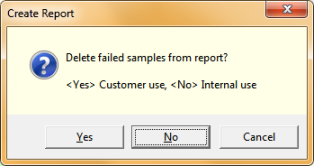 |
Note for FilmStar users: BASIC
Sub Scan followed by Sub Collect
automatically populates a Collection. The spectra used here were
generated in DESIGN (FnumRand.faw)
using the BASIC code shown below. Contact FTG Software if you
require further explanation via ZOOM.
Sub Main
' Monte Carlo
spectral generator
Dim i%
Const nIter% = 50
StatusLabelColor = vbYellow
For i = 1 To nIter
CalcRand
' Uses values in
tolerancing dialog <Ctrl+N>
Collect "RandErr", "Iter " & CStr(i),
i = 1
StatusLabel "Iteration " & CStr(i) &
"/" & CStr(nIter)
Next i
End Sub
FTG Software has considerable
experience in delivering low-cost
automation
solutions for quality assurance with complex coating
specifications.
Contact us to discuss your requirements.
|
A similar workbook is
available for edge filters: highpass, lowpass, and
wide bandpass (high-low).
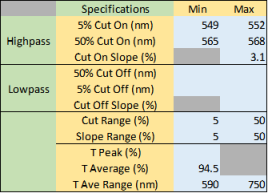
Filter type is
determined by specifications. Wide Bandpass (WPB) =
Highpass + Lowpass.
Download the Workbook.
Extract
All to C:\EdgeCalcDemo.
(or modify path in B18 in the Setup sheet.) The workbook includes examples for
the three filter
types. The download includes FILM Archives (*.faw) as
and BASIC CollectRand.bas for creating Spectra Collections
(Excel xlsx). Designs will work in the
Free Version.
|
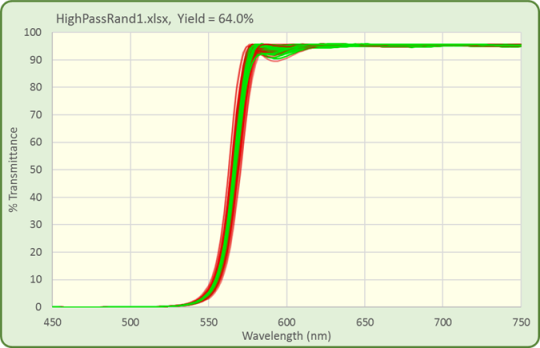 |
|

Click image to download
RandSpeed |
VBA enthusiasts:
Upon testing our edge filter workbook with larger data
sets we sought ways to speed-up calculations. As shown
in the
RandSpeed Workbook a major speed improvement is
possible when averaging a column of data. Ultimately
this results in about 3X speed-up in edge filter
calculations.
New VBA function
XMATCH
simplifies edge calculations, but was not utilized in
the filter workbook as it may not be implemented in your
Excel version. |
QA for Manually Scanned Filters
|
|
Depending
on quantity and/or lack of motorized accessories,
automation may be inappropriate. You still need
Excel to organize results for internal use and distribution
to customers who now demand useful data not printouts.
Pass/fail criteria can be modified and prompts like "Remove optic
for reference scan" translated to any
Windows-supported language. Three points:
1. Boxcar averaging eliminates spurious FTIR peaks in the
blocking region. The calculation is nearly instant; Excel is
very fast when you optimize VBA.
2. After each scan, the technicians checks bandpass and blocking curves. This
prevents gross errors, such as an optic being improperly
mounted.
3. Reports can be generated for internal use (showing failures) or
customer use (failures deleted with prompts to remove
the optics from the tray).
Contact FTG Software for an
online
demonstration. |
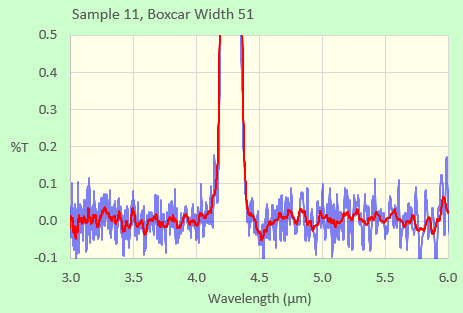 |
|
COMMENT...In
our opinion, filters
are best specified by weighted
integrals, similar to color. Shape criteria
can fail good filters and pass bad ones.
Ultimately, filter buyers are remiss in not
providing the mathematical models that
optical coating engineers require. Such
models are far easier to deal with in Excel
than shape-based models.
Filter design based on performance criteria
was discussed by
J. A. Dobrowolski et al. and implemented
in the
FilmStar Workbook. A Workbook intended
for design is essentially the same as one
for tolerancing or QA. |
Technical Issues/FAQ
|





